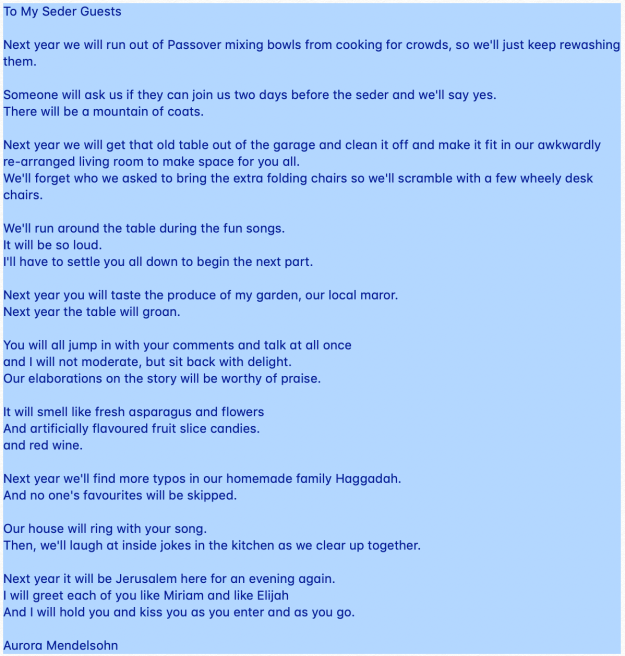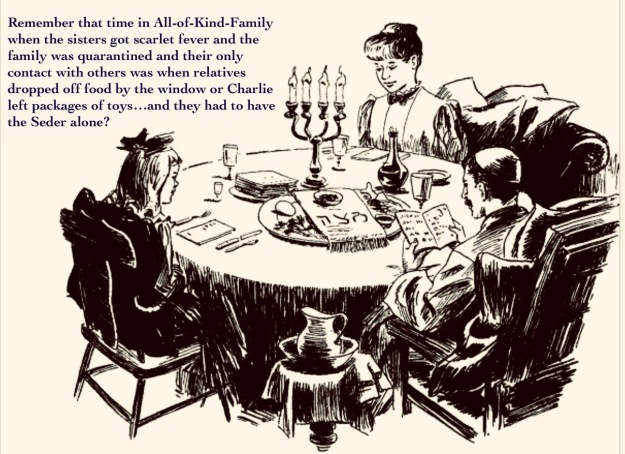To My Seder Guests
Next year we will run out of Passover mixing bowls from cooking for crowds, so we’ll just keep rewashing them.
Someone will ask us if they can join us two days before the seder and we’ll say yes.
There will be a mountain of coats.
Next year we will get that old table out of the garage and clean it off and make it fit in our awkwardly re-arranged living room to make space for you all.
We’ll forget who we asked to bring the extra folding chairs so we’ll scramble with a few wheely desk chairs.
We’ll run around the table during the fun songs.
It will be so loud.
I’ll have to settle you all down to begin the next part.
Next year you will taste the produce of my garden, our local maror.
Next year the table will groan.
You will all jump in with your comments and talk at all once
and I will not moderate, but sit back with delight.
Our elaborations on the story will be worthy of praise.
It will smell like fresh asparagus and flowers
And artificially flavoured fruit slice candies.
and red wine.
Next year we’ll find more typos in our homemade family Haggadah.
And no one’s favourites will be skipped.
Our house will ring with your song.
Then, we’ll laugh at inside jokes in the kitchen as we clear up together.
Next year it will be Jerusalem here for an evening again.
I will greet each of you like Miriam and like Elijah
And I will hold you and kiss you as you enter and as you go.

Notes: This poem makes several references to the Passover Haggadah and prayers.
- “Our elaborations on the story will be worthy of praise” refers to the line at the start of the storytelling in the Haggadah that says, “Whoever expands upon the story of the Exodus from Egypt is worthy of praise.”
- “Taste the produce of my garden” is a reference to the fourth cup of wine where give thanks for “the produce of the field”.
- “Next year it will be Jerusalem here” is a reference to the traditional seder ending, “Next year in Jerusalem”.
- “Like Miriam and like Elijah” is a reference to the prophet Elijah who is a traditionally invited to the seder. Many modern seders invite the prophet Miriam as well.
- “As you enter and as you go” is a reference to the Sh’ma.

